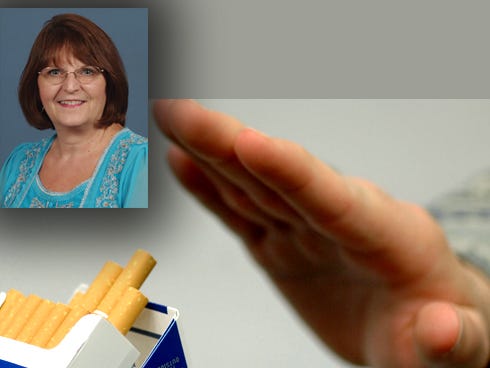
Editor's Note:The American Cancer Society observes the Great American Smokeout on the third Thursday each November. This effort encourages smokers to quit using tobacco and reduce their risk of lung cancer.
Have you wanted to quit using tobacco products but weren't sure how to go about it? You're not alone.
Bridgeway Center Inc., in partnership with Florida State University’s College of Medicine, offers Quit Smoking NOW — an Area Health Education Center Tobacco Cessation Program — to patients, clients, patient caregivers, staffers and staffers' families free of charge.
Talk to a “Quit Coach” at 1-877-U-CAN-NOW (1-877-822-6669), read more about quitting tobacco at www.quitnow.net/florida, or if face-to-face meetings work best for you, find local classes at www.ahectobacco.com.
THIRD-HAND SMOKE
Quitting is hard, but a little education can help you see how your actions affect others.
You've probably heard of second-hand smoke's dangers, but what about third-hand smoke? This is smoke residue deposited on walls, furniture and carpets, among other places.
When a child or animal crawls or walks on the floor and then puts their hand or paw in their mouth, they are being affected by third-hand smoke. Nicotine enters their system by physical contact, not by breathing in the smoke.
Consider the dangers smoking has not only on you but also on those you love. This can help you make the decision to quit.
CH-CH-CH-CHANGES
Changes happen soon after you start smoking.
After 20 minutes, your blood pressure and pulse rate drop to normal, and temperature in your hands and feet increase to normal.
After two to 12 weeks, circulation and breathing improve, and walking becomes easier.
Quitting tobacco benefits the public, too. The air around you is no longer dangerous to children and other adults.
Have difficulty quitting? Change your daily routine, drink more water and increase exercise. If you work in a building with an elevator, take a break and ride it; after all, you can’t smoke in elevators.
SUBSTITUTIONS
If you want to gradually quit using tobacco, over-the-counter nicotine replacement therapy — patches, gum and lozenges — provide a small amount of nicotine through your mouth or skin.
Feel anxious? Try walking, working out or doing any activity you would normally do to relax.
Are you hungry when you're not smoking? Try eating vegetables, make a salad or have some of your favorite raw veggies to replace your smoking.
Do you have coffee and a cigarette first thing in the morning? Changing this habit is as easy as switching to tea, or having your first cup of coffee an hour after waking. Drinking ice water also helps with cravings.
Find what works for you and stick to it — you can beat this!
Remember, with determination to quit, support of friends and family, and the help of available resources, you can enjoy and happy and healthy life.
This article originally appeared on Crestview News Bulletin: Use these resources to quit tobacco
